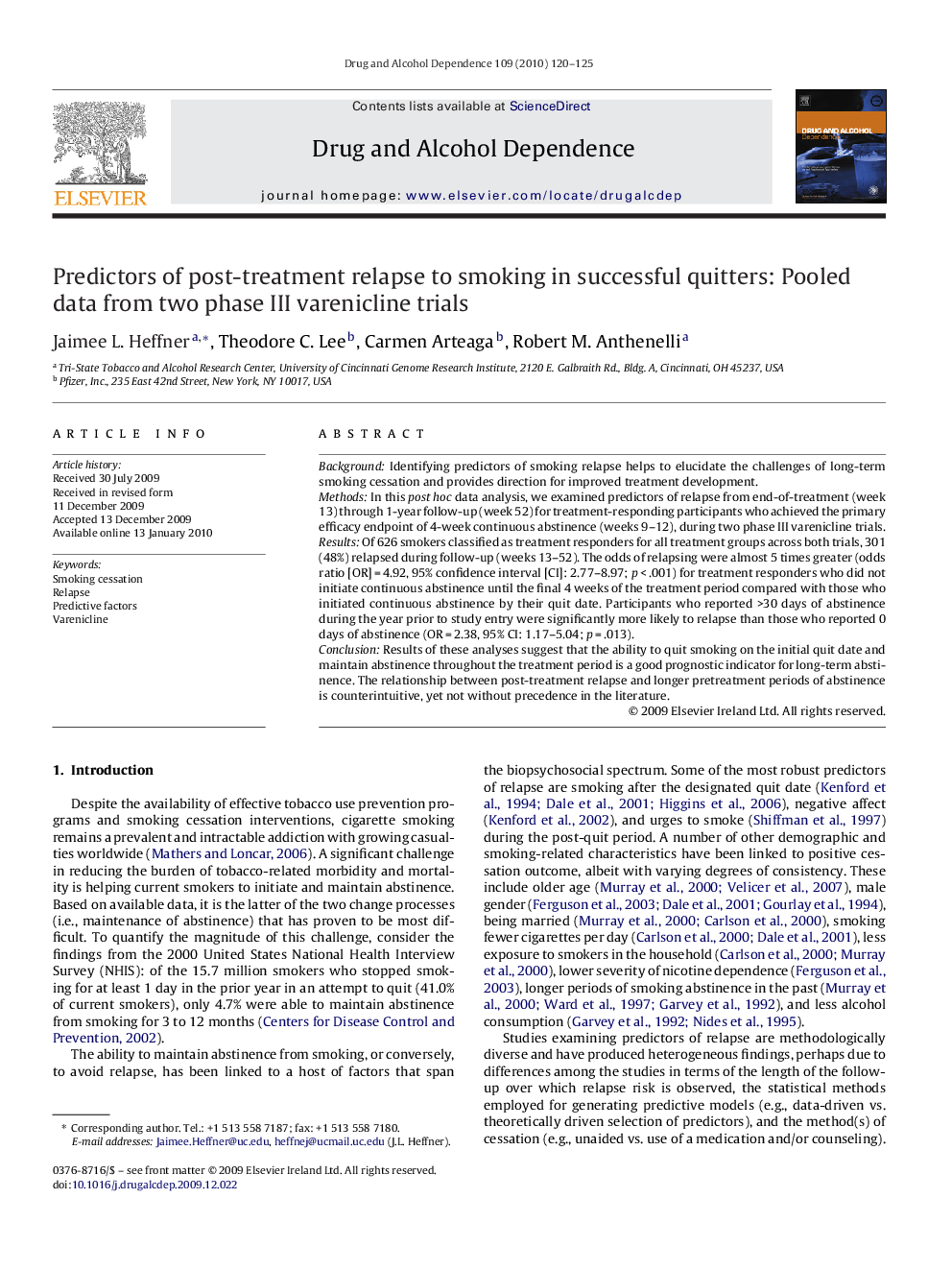| Article ID | Journal | Published Year | Pages | File Type |
|---|---|---|---|---|
| 1070768 | Drug and Alcohol Dependence | 2010 | 6 Pages |
BackgroundIdentifying predictors of smoking relapse helps to elucidate the challenges of long-term smoking cessation and provides direction for improved treatment development.MethodsIn this post hoc data analysis, we examined predictors of relapse from end-of-treatment (week 13) through 1-year follow-up (week 52) for treatment-responding participants who achieved the primary efficacy endpoint of 4-week continuous abstinence (weeks 9–12), during two phase III varenicline trials.ResultsOf 626 smokers classified as treatment responders for all treatment groups across both trials, 301 (48%) relapsed during follow-up (weeks 13–52). The odds of relapsing were almost 5 times greater (odds ratio [OR] = 4.92, 95% confidence interval [CI]: 2.77–8.97; p < .001) for treatment responders who did not initiate continuous abstinence until the final 4 weeks of the treatment period compared with those who initiated continuous abstinence by their quit date. Participants who reported >30 days of abstinence during the year prior to study entry were significantly more likely to relapse than those who reported 0 days of abstinence (OR = 2.38, 95% CI: 1.17–5.04; p = .013).ConclusionResults of these analyses suggest that the ability to quit smoking on the initial quit date and maintain abstinence throughout the treatment period is a good prognostic indicator for long-term abstinence. The relationship between post-treatment relapse and longer pretreatment periods of abstinence is counterintuitive, yet not without precedence in the literature.
